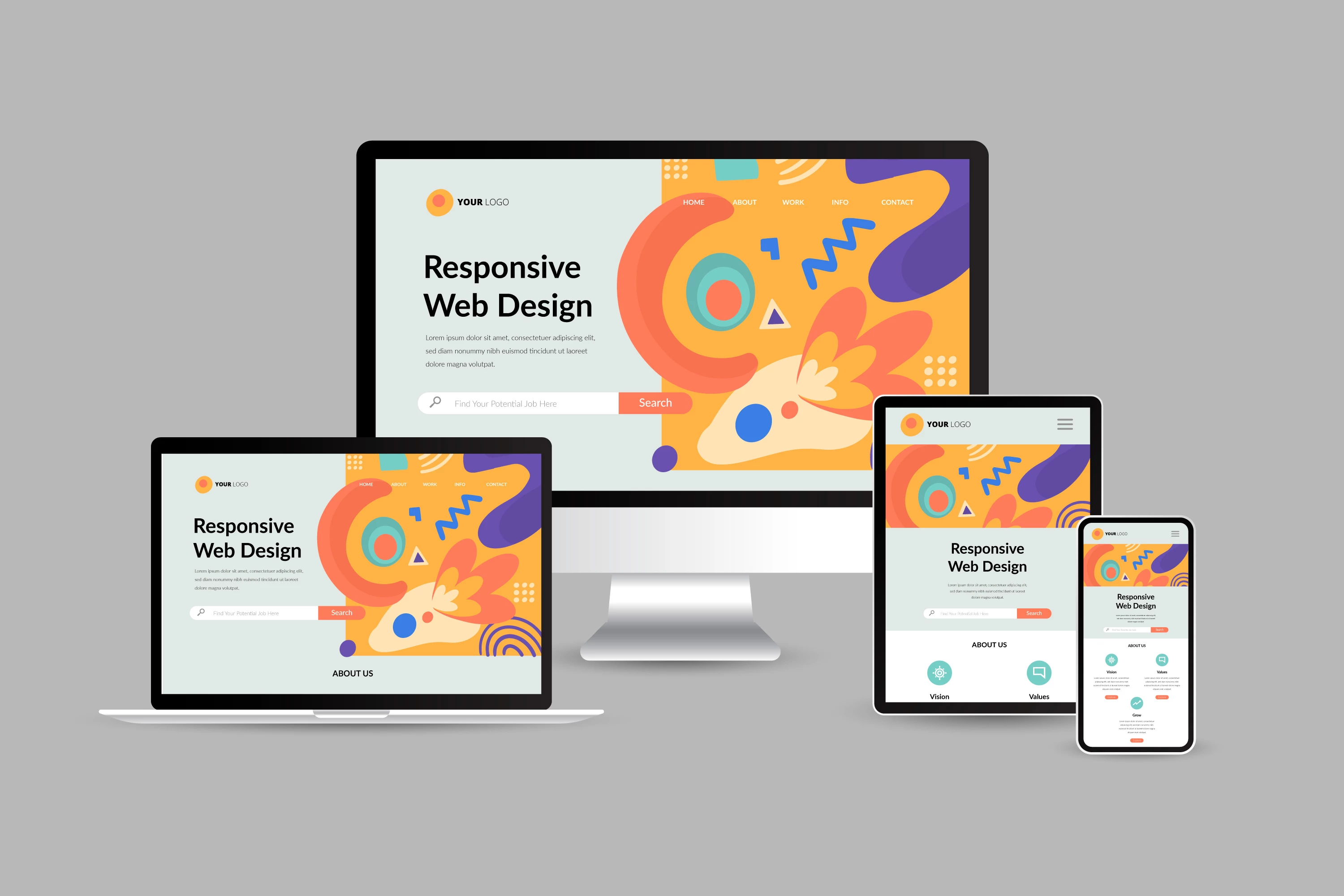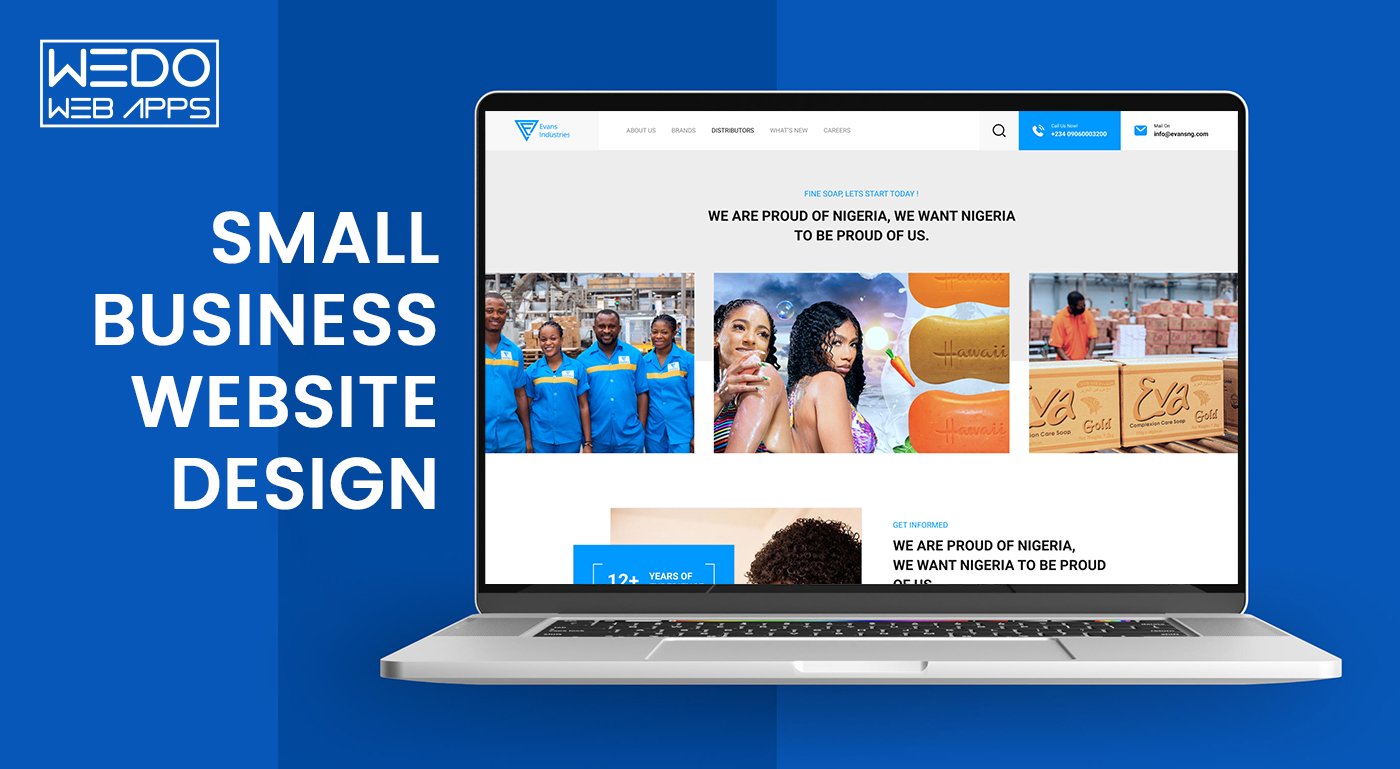Change Your Brand with Cutting-Edge Website Design Approaches
Change Your Brand with Cutting-Edge Website Design Approaches
Blog Article
Comprehending the Function of Responsive Design in Modern Internet Site Advancement
In today's digital landscape, receptive style is no more a deluxe however a necessity in internet site advancement. As users accessibility sites from an array of tools, from extensive desktop computer keeps an eye on to pocket-sized smartphones, making certain a constant and engaging individual experience is paramount. Receptive design completes this by employing scalable media and versatile layouts, accommodating the nuanced demands of each gadget. Yet, the significance of responsive layout prolongs past user experience-- it is additionally an important factor in seo and accessibility. But exactly how specifically does it influence these areas, and what approaches guarantee its effective application?
Importance of Responsive Design
In today's digital landscape, the relevance of receptive style in internet site growth can not be overemphasized. Responsive style allows websites to instantly readjust their layout and functionality based on the screen dimension and positioning of the gadget being used.
Additionally, receptive style is critical for seo (SEO) Internet search engine like Google prioritize mobile-friendly internet sites in their search results page, implying that a responsive style can substantially impact a website's exposure and position. This optimization not only improves the user experience yet also drives organic website traffic and boosts the potential for conversion and profits generation.
In enhancement, receptive style provides companies a cost-effective option by eliminating the need for numerous versions of an internet site. By improving internet development procedures and reducing maintenance efforts, companies can allocate sources extra effectively, inevitably resulting in improved return on investment. Therefore, receptive design is vital in today's affordable digital atmosphere.
Crucial Element of Responsive Layout
To properly implement responsive style, it is important to concentrate on a number of key components that guarantee ideal functionality and individual experience throughout varied gadgets. One of the essential components is the flexible grid format, which permits developers to produce liquid grids that immediately adapt to different screen dimensions. This ensures that web content keeps symmetry and readability, no matter the device being utilized.

Additionally, touch-friendly navigating is indispensable for receptive style. Carrying out quickly tappable switches and intuitive motion controls enhances functionality on touchscreen devices. Prioritizing performance optimization is additionally important, as it improves loading times and reduces bounce prices, specifically on mobile connect with variable rate.
Finally, employing a mobile-first approach ensures that the layout is originally enhanced for smaller screens prior to broadening to fit desktops. This method assures that necessary performance and appearances are protected across all systems, eventually enhancing the general user experience.
Influence on Individual Engagement
Receptive design dramatically influences individual interaction by improving ease of access and complete satisfaction across numerous gadgets. By ensuring that a web site's layout adapts effortlessly to various screen dimensions, receptive style permits users to gain access to web content effortlessly, whether they are making use of a tablet computer, desktop computer, or smartphone . This adaptability decreases the Recommended Reading requirement for unneeded zooming or scrolling, providing a much more pleasant and user-friendly surfing experience. Because of this, customers are most likely to remain on the website much longer, discover added pages, and interact with the content, all of which are essential indicators of boosted interaction.
Furthermore, responsive design adds to much faster page loading times, which is vital for keeping customer passion. Individuals are much more inclined to desert a site if it takes too lengthy to tons, especially on smart phones. By maximizing performance for varied platforms, responsive style reduces loading hold-ups, keeping users involved and minimizing bounce rates.
Search Engine Optimization Advantages of Responsive Layout
While improving customer experience is a key goal, responsive style additionally plays an essential function in boosting a website's search engine optimization (SEO) Responsive layout makes certain that a site adapts to different display dimensions, removing the need for separate mobile and desktop versions.
Moreover, receptive layout help in faster web page filling More Help times, a crucial element in search engine optimization. Browse engines prefer internet sites that fill quickly, acknowledging that individuals are more probable to desert sites that take as well long to present. By utilizing receptive design, programmers can improve and enhance images material, guaranteeing reliable filling and boosted internet search engine positions.
In addition, a cohesive URL structure throughout tools simplifies the indexing procedure for internet search engine, boosting crawl efficiency. This uniformity in Links enhances a site's authority and reputation, bring about improved visibility in search results page. In summary, responsive over at this website design is not simply a pattern yet a basic element of SEO method, making certain web sites are both user-friendly and search engine suitable.
Implementing Receptive Style Approaches
In the world of modern-day internet development, implementing receptive layout approaches is similar to crafting a flexible canvas that readjusts perfectly to numerous screen measurements. Central to this strategy is the usage of flexible grid-based designs, which utilize relative systems like portions instead of taken care of units such as pixels. This ensures that content ranges appropriately throughout devices. One more crucial technique entails employing media questions, which enable programmers to apply different designs based on the qualities of the tool, such as resolution, width, and elevation.
Receptive images and media are likewise vital parts. By making use of methods like CSS media questions and the HTML 'picture' element, developers can offer appropriately sized photos based on the customer's gadget, enhancing lots times and boosting user experience. Additionally, the consolidation of fluid typography guarantees that message is readable and visually pleasing on any type of display, accomplished via scalable units like 'rem' and 'em'.

Verdict
Receptive layout makes up an essential aspect of modern website advancement, considerably boosting user experience across a range of devices. By including versatile layouts, scalable images, and touch-friendly navigation, it enhances customer interaction and optimizes website efficiency. Receptive design is pivotal for Search engine optimization, as it straightens with search engines' choice for mobile-friendly sites, thereby boosting visibility and organic traffic. Eventually, carrying out receptive design approaches makes sure enhanced access and usability, making internet sites more reliable and user-centric.
To properly implement receptive design, it is essential to concentrate on numerous essential components that make sure optimal functionality and individual experience across varied devices.Responsive design substantially affects individual involvement by improving ease of access and complete satisfaction throughout numerous devices. By making sure that a website's design adapts perfectly to various display dimensions, responsive style allows users to gain access to web content easily, whether they are using a desktop computer, smart device, or tablet computer .While improving customer experience is a main objective, receptive design additionally plays an essential role in boosting a website's search engine optimization (SEO)Receptive style constitutes an important element of modern site advancement, considerably enhancing individual experience across a variety of gadgets.
Report this page